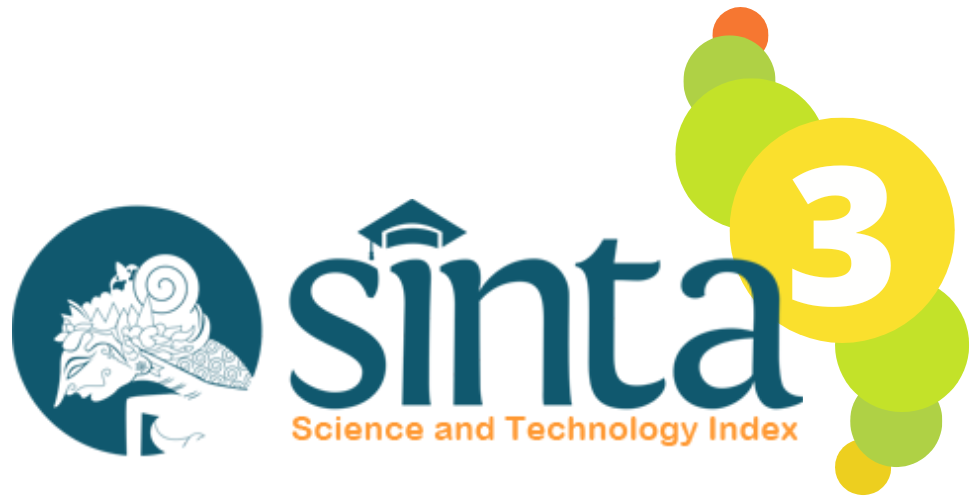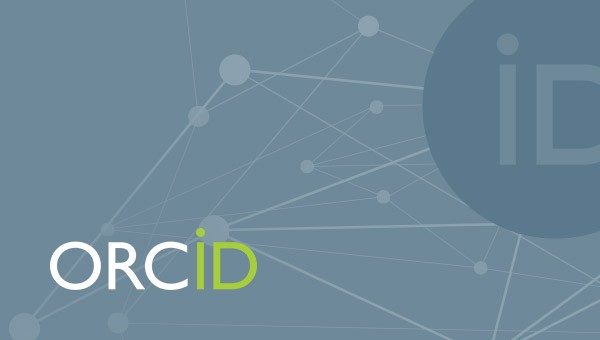Development and Validation of the EcoThermal Literacy Assessment: An Instrument for Environmental Literacy in Thermodynamics Learning
DOI:
10.29303/jpft.v11i1.8676Published:
2025-03-30Issue:
Vol. 11 No. 1 (2025): January-JuneKeywords:
EcoThermal Literacy Assessment, Environmental Literacy, ThermodynamicsArticles
Downloads
How to Cite
Downloads
Metrics
Abstract
Global environmental issues are becoming increasingly alarming and require serious attention. Enhancing students' environmental literacy is a strategic step in fostering awareness and sustainable actions. Thermodynamics in physics has the potential to be linked to environmental issues, but no specific assessment instrument is available to evaluate students' environmental literacy. This study aims to ensure the validity and reliability of the EcoThermal Literacy Assessment as an evaluation instrument for environmental literacy in learning thermodynamics. This instrument comprises four main dimensions: knowledge (physical and ecological systems, environmental issues, problem-solving solutions, action strategies), competence (identification, analysis, evaluation, argumentation of environmental issues), attitude (sensitivity, concern, environmental motivation), and behavior (environmental actions, problem prevention, resource management). The study employs the 4-D R&D model. Content validity is tested using Aiken’s V index, while empirical validity is examined through Pearson correlation. Reliability is measured using Cronbach’s Alpha, while discrimination power and difficulty levels are analyzed using SPSS 27. Most items exhibit high validity and good reliability (α = 0.802–0.936). The majority have moderate to good discrimination power, but some in the knowledge dimension have low discrimination power and require revision. The difficulty level is predominantly moderate to easy. This study focuses on evaluating the instrument's validity and reliability, without testing its impact on student learning outcomes. The findings can serve as a reference for assessment development and further research on the practicality of the instrument in physics learning integrated with environmental issues.
References
Ahmadi, Z. S. (2022). Review Article : Peningkatan Literasi Lingkungan Siswa di Sekolah. Educatoria : Jurnal Ilmiah Ilmu Pendidikan, 2(3), 175–180. https://doi.org/10.36312/ejiip.v2i3.105 DOI: https://doi.org/10.36312/ejiip.v2i3.105
Aiken, L. R. (1985). Three Coefficients for Analyzing the Reliability and Validity of Ratings. Educational and Psychological Measurement, 45(1), 131–142. https://doi.org/10.1177/0013164485451012 DOI: https://doi.org/10.1177/0013164485451012
Aswita, D., Fuadi, T. M., Abubakar, A., Hanim, N., Azzarkasyi, M., & Febriyanti, D. (2022). Development Measurement of Environmental Literacy And Ethics Instrument for Adults Education. International journal of health sciences, 7623–7638. https://doi.org/10.53730/ijhs.v6nS5.11651 DOI: https://doi.org/10.53730/ijhs.v6nS5.11651
Ayu, P. S., Marhaeni, A., & Budiadnyana, P. (2018). Pengembangan Instrumen Asesmen Keterampilan Belajar dan Berinovasi pada Mata Pelajaran IPA SD. PENDASI: Jurnal Pendidikan Dasar Indonesia, 2(2), 90–100. https://doi.org/10.23887/jpdi.v2i2.2696 DOI: https://doi.org/10.23887/jpdi.v2i2.2696
Barokah, A., Sugianto, S., & Astuti, B. (2021). Analisis Perencanaan Pengembangan Instrumen Evaluasi Berbasis Higher Order Thinking Skills (Hots) Materi Hukum Termodinamika. Phenomenon : Jurnal Pendidikan MIPA, 11(1), 75–86. https://doi.org/10.21580/phen.2021.11.1.7303 DOI: https://doi.org/10.21580/phen.2021.11.1.7303
Borg, W. R., & Gall, M. D. (1989). Educational Research And Development Is A Process Used To Develop And Validate Educational Product. Longman.
Budiastuti, D., & Bandur, A. (2018). Validitas Dan Reliabilitas Penelitian. Mitra Wacana Media.
Cronbach, L. J. (1951). Coefficient Alpha and the Internal Structure of Tests. Psychometrika, 16(3), 297–334. https://doi.org/10.1007/BF02310555 DOI: https://doi.org/10.1007/BF02310555
Deke, O., Jewaru, A. A. I., & Kaleka, Y. U. (2022). Engineering Design Process pada STEM melalui Authentic PBL dan Asesmen Formatif : Meninjau Desain Argumentasi Ilmiah Siswa Terkait Termodinamika. Borneo Journal of Science and Mathematics Education, 2(3), 94–117. https://doi.org/10.21093/bjsme.v2i3.5948 DOI: https://doi.org/10.21093/bjsme.v2i3.5948
del Socorro, Valdez-Tribolet, M., & Adán Guillermo, R.-G. (2024). Design and Validation of an Instrument to Assess Competencies for Sustainability in University Students. International Journal of Social Science Humanity & Management Research, 03(12), 1622–1625. https://doi.org/10.58806/ijsshmr.2024.v3i12n09 DOI: https://doi.org/10.58806/ijsshmr.2024.v3i12n09
Dharma, S., & Arriah, F. (2024). Desain Instrumen Pengukuran Literasi Lingkungan Siswa SMA dengan Menggunakan Pendekatan Model Rasch Instruments Design for Measuring Environmental Literacy of High School Students Using the Rasch Model Approach. 9, 218–236. https://doi.org/10.24832/jpnk.v9i2.5126
Dissanayake, D. M. S. B. (2024). Connecting the Dots; Environmental Literacy Index in Measuring Knowledge for Environmental Conservation. Proceedings of International Forestry and Environment Symposium, 27. https://doi.org/10.31357/fesympo.v27.7189 DOI: https://doi.org/10.31357/fesympo.v27.7189
Farwati, R., Permanasari, A., Firman, H., & Suhery, T. (2018). Pengembangan dan Validasi Instrumen Evaluasi Literasi Lingkungan. https://doi.org/10.36706/JPPK.V5I1.8415
Grace Modupe Bada, Olisa Fiyinfolu Adedayo, & Olatoye Isaac Olufemi. (2024). Sustainable education for underserved U.S. communities: Empowering students through environmental literacy and green job pathways. International Journal of Frontline Research in Multidisciplinary Studies, 4(1), 045–052. https://doi.org/10.56355/ijfrms.2024.4.1.0032 DOI: https://doi.org/10.56355/ijfrms.2024.4.1.0032
Haladyna, T. (2022). Creating multiple-choice items for testing student learning. International Journal of Assessment Tools in Education, 9(Special Issue), 6–18. https://doi.org/10.21449/ijate.1196701 DOI: https://doi.org/10.21449/ijate.1196701
Hanafi, Y., Aprilia, N., Nurusman, A. A., Purwanto, A., Nadiroh, N., & Budi, S. (2021). Analisis Kebutuhan Pengembangan Instrumen Literasi Lingkungan Untuk Mahasiswa Pendidikan Biologi FKIP Universitas Ahmad Dahlan. JURNAL EKSAKTA PENDIDIKAN (JEP), 5(2), 174–180. https://doi.org/10.24036/jep/vol5-iss2/604 DOI: https://doi.org/10.24036/jep/vol5-iss2/604
Hardiansyah, F., Ar, M. M., & Hidayatillah, Y. (2022). IPAS Learning Assessment To Measure Science Process Skill In Elementary School. International Journal of Elementary Education, 6(3), 612–623. https://doi.org/https://doi.org/10.23887/ijee.v6i4.54217
Hollweg, K. S., Taylor, J. R., Bybee, R. W., Marcinkowski, T. J., William C. McBeth, & Zoido, P. (2011). Developing A Framework For Assessing Environmental Literacy. North American Association for Environmental Education (NAAEE).
Jarwopuspito, J., Widarto, W., & Yasdin, Y. (2023). Green Skills Literacy Level Analysis Vocational Students in Indonesia. Journal of Advanced Zoology, 44(4), 511–521. https://doi.org/10.17762/jaz.v44i4.338 DOI: https://doi.org/10.17762/jaz.v44i4.338
Jauhariyah, M. N. R., Prahani, B. K., Syahidi, K., Deta, U. A., Lestari, N. A., & Hariyono, E. (2021). ESD for physics: How to infuse education for sustainable development (ESD) to the physics curricula? Journal of Physics: Conference Series, 1747(1). https://doi.org/10.1088/1742-6596/1747/1/012032 DOI: https://doi.org/10.1088/1742-6596/1747/1/012032
Karuni, N. W. I. (2020). Profil Literasi Lingkungan Siswa SMA se Provinsi Bali [Universitas Pendidikan Ganesha]. https://repo.undiksha.ac.id/4226/
Kementerian Lingkungan Hidup dan Kehutanan. (2022). Status Lingkungan Hidup Indonesia 2022 (S. Nurbaya (Ed.)). Kementrian Lingkungan Hidup dan Kehutanan, Republik Indonesia. https://www.menlhk.go.id/cadmin/uploads/SLHI_2022_upload_final_77f9948571.pdf
Kurniawan, A., Febrianti, A. N., Hardianti, T., Ichsan, Desy, Risan, R., Sari, D. M. M., Sitopu, D. D. J. W., & Dewi, N. R. S. (2022). Evaluasi Pembelajaran. PT. Global Eksekutif Teknologi Anggota IKAPI.
Lestari, E. K., & Yudhanegara, M. R. (2015). Penelitian Pendidikan Matematika. PT Refika Aditama.
Lestari, N. A., Susanti, F. M., Deta, U. A., Hariyono, E., & Madlazim. (2024). Climate Change Education in Sustainable Physics Learning: Systematic Literature Review. E3S Web of Conferences, 482, 1–9. https://doi.org/10.1051/e3sconf/202448204003 DOI: https://doi.org/10.1051/e3sconf/202448204003
Lestari, N. A., Susanti, F. M., Madlazim, M., Hariyono, E., & Uulaa, R. F. R. (2024). Integrated environmental education physics project to enhance student creativity. Momentum: Physics Education Journal, 8(1), 75–83. https://doi.org/10.21067/mpej.v8i1.9054 DOI: https://doi.org/10.21067/mpej.v8i1.9054
McBeth, W., & Volk, T. (2009). The national environmental literacy project: A baseline study of middle grade students in the United States. Journal of Environmental Education, 41(1), 55–67. https://doi.org/10.1080/00958960903210031 DOI: https://doi.org/10.1080/00958960903210031
Mujib, M., Mardiyah, M., & Suherman, S. (2023). Development and psychometric properties of an environmental literacy in secondary school. Revista Fuentes, 25(3), 267–282. https://doi.org/10.12795/revistafuentes.2023.22642 DOI: https://doi.org/10.12795/revistafuentes.2023.22642
Nasution, R. (2016). Analisis Kemampuan Literasi Lingkungan Siswa SMA Kelas X di Samboja dalam Pembelajaran Biologi. Proceeding Biology Education Conference, 13(1), 352–358.
Organisation for Economic Co-operation and Development (OECD). (2012). OECD Environmental Outlook to 2050: The Consequences of Inaction. OECD. https://doi.org/10.1787/9789264122246-en DOI: https://doi.org/10.1787/9789264122246-en
Panchal, A. P., & Moschandreas, D. J. (2015). Public literacy on sustainable development. International Journal of Environment and Sustainable Development, 14(1), 71–88. https://doi.org/10.1504/IJESD.2015.066906 DOI: https://doi.org/10.1504/IJESD.2015.066906
Pearson, K. (1920). Notes on history of correlation. Biometrika, 13(1), 25–45. https://doi.org/10.1093/biomet/13.1.25 DOI: https://doi.org/10.1093/biomet/13.1.25
Rani, D., & Badusha, B. (2023). Intelligent Descriptive Answer Evaluation System. Computer Science, Engineering and Technology, 1(3), 13–16. https://doi.org/10.46632/cset/1/3/3 DOI: https://doi.org/10.46632/cset/1/3/3
Rianty, R., Santiani, S., Yuliani, H., & Azizah, N. (2024). Literature Analysis: Measuring Tool For Environmental Literacy In Peatland Integration Science Learning. Jurnal Penelitian Pendidikan IPA, 9(1), 8–15. https://doi.org/10.26740/jppipa.v9n1.p8-15 DOI: https://doi.org/10.26740/jppipa.v9n1.p8-15
Rokhmah, Z., Nuril, A., Fauziah, M., Ipa, J., Matematika, F., Ilmu, D., Alam, P., & Surabaya, U. N. (2021). Analisis Literasi Lingkungan Siswa SMP pada Sekolah Berkurikulum Wawasan Lingkungan. Pensa E-Jurnal Pendidikan Sains, 9(2), 176–181. https://ejournal.unesa.ac.id/index.php/pensa/index
Safitri, A., Habibi, H., & Matlubah, H. (2024). Literasi Lingkungan Siswa Smp Di Daerah Kepulauan. Prosiding SNAPP : Sosial Humaniora, Pertanian, Kesehatan dan Teknologi, 2(1), 295–307. https://doi.org/10.24929/snapp.v2i1.3149 DOI: https://doi.org/10.24929/snapp.v2i1.3149
Santiani, & Annovasho, J. (2023). Pembelajaran Interdisipliner Fisika Lahan Gambut Berkelanjutan (I-FLGB) (Vol. 978-623–57). CV. Penerbit Puspa Grafika.
Santiani, S., Annovasho, J., & Winarto, W. (2023). Collaborative Problem-Solving in Sustainable Introductory Physics with Peatlands-Smart Project Course Semester Learning Plan. Jurnal Penelitian Pendidikan IPA, 9(12), 11925–11934. https://doi.org/10.29303/jppipa.v9i12.5620 DOI: https://doi.org/10.29303/jppipa.v9i12.5620
Santiani, S., Rusilowati, A., Sudarmin, S., & Ngabekti, S. (2023). Fit-Model Sustainable Competencies of Palangka Raya Indonesia Peat Lands in the Environmental Literacy (P-PSEL) Questionnaire for Teacher-Candidates. Polish Journal of Environmental Studies, 32(2), 1781–1788. https://doi.org/10.15244/pjoes/157496 DOI: https://doi.org/10.15244/pjoes/157496
Santoso, R., Roshayanti, F., Joko Siswanto, D., Negeri, S., & PGRI Semarang, U. (2021). Analisis Literasi Lingkungan Siswa SMP. JPPS (Jurnal Penelitian Pendidikan Sains), 10(2), 2549–1597. https://journal.unesa.ac.id/index.php/jpps DOI: https://doi.org/10.26740/jpps.v10n2.p1976-1982
Szczytko, R., Stevenson, K., Peterson, M. N., Nietfeld, J., & Strnad, R. L. (2019). Development and validation of the environmental literacy instrument for adolescents. Environmental Education Research, 25(2), 193–210. https://doi.org/10.1080/13504622.2018.1487035 DOI: https://doi.org/10.1080/13504622.2018.1487035
Thiagarajan, S., Semmel, D. S., & Semmel, M. I. (1974). Instructional Development for Training Teachers of Exceptional Children: A Sourcebook. Leadership Training Institute/Special Education, University of Minnesota. https://files.eric.ed.gov/fulltext/ED090725.pdf
Wardani, R. A. K. (2017). Analisis Literasi Lingkungan Siswa Sma Dan Proses Pembelajaran Biologi Materi Perubahan Lingkungan dan Daur Ulang Limbah. Universitas Sebelas Maret.
Yadav, S., Banerjee, A., Jhariya, M., Meena, R. S., Raj, D., Khan, N., Sihag, S., & Sheoran, S. (2021). Environmental education for sustainable development (hal. 415-443.). DOI: https://doi.org/10.1007/978-981-15-9496-0_14
Yustiana, Y. R., Kaniawati, I., & Liliawati, W. (2024). Integration of Waste-to-Energy in Physics Learning : An Andragogical Approach for Sustainable Education. 10(2). DOI: https://doi.org/10.29303/jpft.v10i2.8211
Author Biographies
Rini Rianty, Institut Agama Islam Negeri Palangka Raya
Physics Education Study Program
Santiani Santiani, Institut Agama Islam Negeri (IAIN) Palangka Raya
Physics Education Study Program
Muhammad Nasir, Institut Agama Islam Negeri (IAIN) Palangka Raya
Physics Education Study Program
License
Copyright (c) 2025 Rini Rianty, Santiani Santiani, Muhammad Nasir

This work is licensed under a Creative Commons Attribution-ShareAlike 4.0 International License.
Authors who publish with Jurnal Pendidikan Fisika dan Teknologi (JPFT) agree to the following terms:
- Authors retain copyright and grant the journal right of first publication with the work simultaneously licensed under a Creative Commons Attribution License 4.0 International License (CC-BY-SA License). This license allows authors to use all articles, data sets, graphics, and appendices in data mining applications, search engines, web sites, blogs, and other platforms by providing an appropriate reference. The journal allows the author(s) to hold the copyright without restrictions and will retain publishing rights without restrictions.
- Authors are able to enter into separate, additional contractual arrangements for the non-exclusive distribution of the journal's published version of the work (e.g., post it to an institutional repository or publish it in a book), with an acknowledgement of its initial publication in Jurnal Pendidikan Fisika dan Teknologi (JPFT).
- Authors are permitted and encouraged to post their work online (e.g., in institutional repositories or on their website) prior to and during the submission process, as it can lead to productive exchanges, as well as earlier and greater citation of published work (See The Effect of Open Access).










